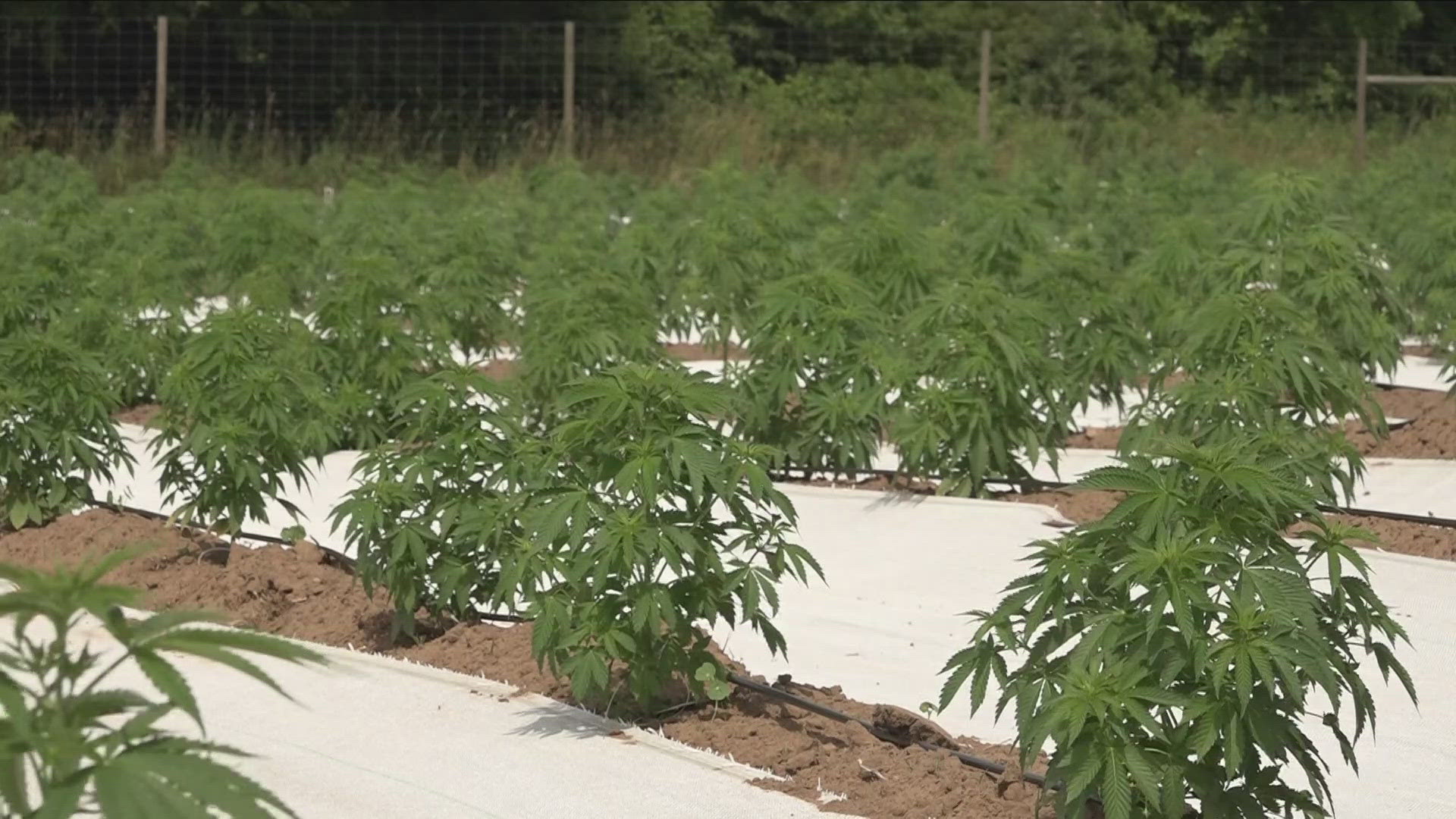NIAGARA COUNTY, N.Y. — Licensed cultivators are no longer the only ones legally allowed to grow marijuana in New York.
For the first time since the plant was legalized for recreational use, anyone 21 and older can grow cannabis at home. The guidelines for "Personal Home Cultivation" went into effect on June 26.
The rules allow for up to six plants per adult — three mature and three immature — to be grown at home.
Households are capped at 12 plants total and no more than five pounds of cannabis flower, or an equivalent can be present in a home, according to the New York State Office of Cannabis Management, the state's cannabis regulatory agency.
"Homegrow," as it's called, is something that Tom Szulist, a licensed cultivator and co-owner of Innocence Cannabis, has been eagerly awaiting.
Walking through his field of plants on a sunny Tuesday morning, Szulist said: "These plants have been out here now for about three and a half weeks."
The field is a sea of green broken up by white reflective panels that line the alleys in between plantings. It's the largest crop Szulist has ever grown, and with plants "knee-high by the Fourth of July," things are looking good.
He bends down to prune a Mendocino Purple Kush.
"People will go, 'Oh my gosh, you're cutting the plant.' No, we're directing the growth of the plant," Szulist said.
It's one of many tips he has for people venturing into the new frontier of do-it-yourself marijuana. Others include ensuring plants have good drainage and aren't being over-fertilized.
Then there's picking the right type of plant.
"The genetics that we need to look for in this area are plants that are resistant to powdery mildew and botrytis, and also have an early maturity around the middle of October, so your chances of having a successful year are much higher," Szulist said.
The learning curve can be large, he added, but after two years of cultivating, he's eager to share his knowledge with home-growers.
Seeds and/or immature plants can be purchased from state-licensed dispensaries, microbusinesses, and other state-authorized entities according to the state's regulatory agency.
However, as Candice Heffelman, general manager of East Leaf dispensary in Cheektowaga, noted, so far there aren't a lot of cultivators able to grow immature plants for sale to the general public.
"There has been a hiccup in cultivators trying to obtain licenses so there hasn't been a lot of movement," she said.
According to Szulist, from Innocence Cannabis, to sell their seedlings to dispensaries, they would need a nursery license from the New York State Department of Agriculture and Markets in addition to their cannabis license.
The nursery license is the same type greenhouses are required to have and requires inspection and payment of an additional licensing fee. In this case, instead of flowers, the license would allow cultivators to sell immature marijuana plants.
"In the meantime what we're trying to do to fill the gap is we've given some courses on how to grow earlier in the spring. We'll start to do that again for maintenance of the plant," Szulist said.
Despite the delay, both Szulist and Heffelman believe homegrown remains a notable step because it brings New Yorkers closer to the cannabis they consume.
"For us to be able to connect with the local cultivators, as well as the local nurseries in our area, we think it's a great way for everyone to expand their footprint," Candice Heffelman said.

